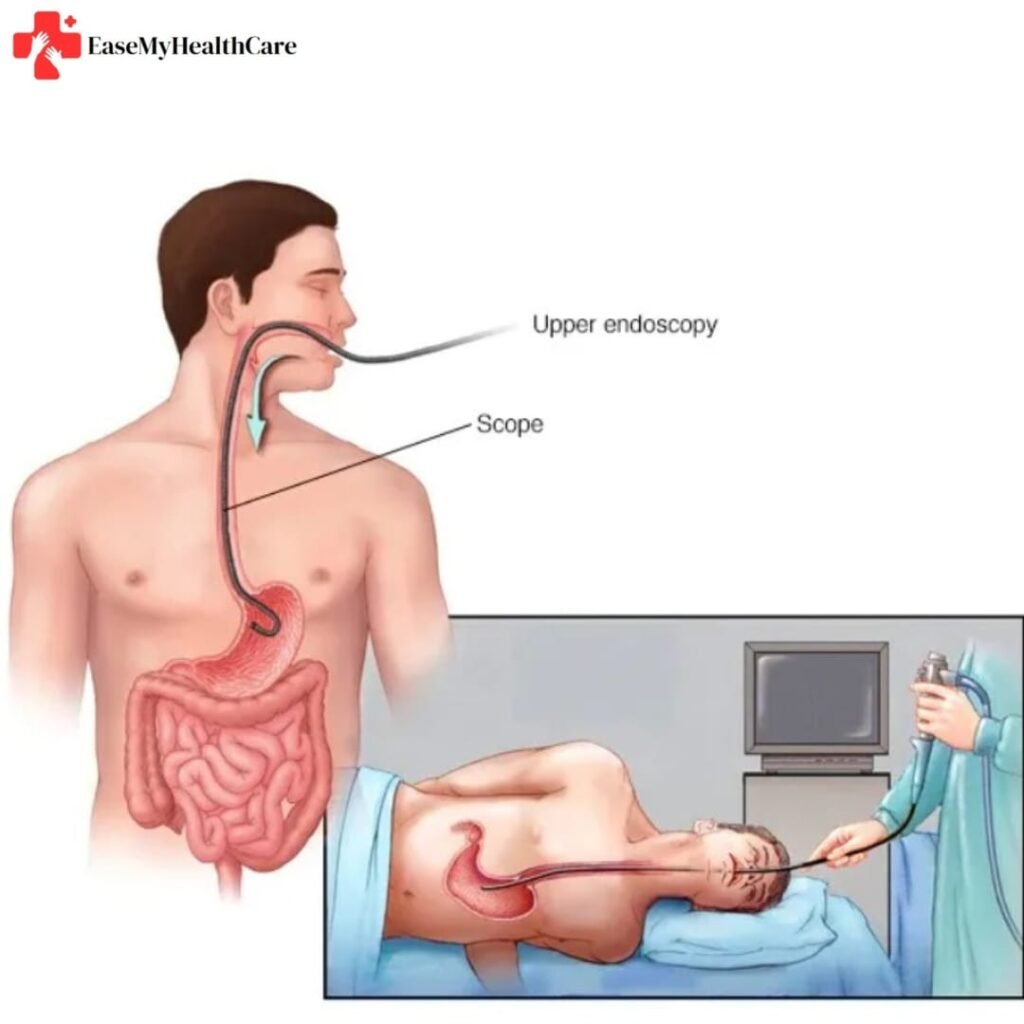Endoscopy is a medical procedure widely used to diagnose and treat various conditions affecting internal organs and tissues. This minimally invasive technique provides detailed insights into a patient’s health without the need for major surgery. In this blog, we’ll explore what endoscopy is, its types, uses, procedure, risks, recovery, and costs, offering valuable information for those considering or curious about this procedure.
What is Endoscopy?
Endoscopy is a diagnostic and therapeutic procedure that uses a thin, flexible tube with a camera and light attached (called an endoscope) to examine the interior of the body. The images from the camera are transmitted to a monitor, allowing doctors to view and assess abnormalities or perform minor surgical procedures.

Types of Endoscopy
Endoscopy is categorized based on the area of the body being examined:
1. Upper Endoscopy (Esophagogastroduodenoscopy)
- Examines the esophagus, stomach, and upper part of the small intestine.
- Commonly used to investigate conditions like acid reflux, ulcers, and swallowing difficulties.
2. Colonoscopy and Sigmoidoscopy
- Colonoscopy examines the entire colon, while sigmoidoscopy focuses on the lower part of the colon.
- Primarily used to detect polyps, cancer, or inflammatory bowel diseases.
3. Bronchoscopy
- Examines the airways and lungs.
- Used to diagnose conditions like chronic cough, infections, or lung cancer.
4. Arthroscopy
- Examines joints, such as the knee or shoulder.
- Typically used for diagnosing or treating joint injuries or arthritis.
5. Capsule Endoscopy
- Involves swallowing a pill-sized camera that captures images of the gastrointestinal tract.
- Useful for detecting small intestine issues that are hard to reach with traditional endoscopy.
6. Hysteroscopy
- Examines the uterus and surrounding reproductive organs.
- Often used for diagnosing infertility or abnormal uterine bleeding.
Why is Endoscopy Performed?
Endoscopy serves both diagnostic and therapeutic purposes. Common reasons include:
Diagnostic Purposes:
- Investigating symptoms like persistent stomach pain, chronic cough, or bleeding.
- Detecting conditions like ulcers, tumors, or inflammation.
- Monitoring chronic diseases such as Crohn’s disease or cancer.
Therapeutic Purposes:
- Removing foreign objects.
- Treating bleeding ulcers.
- Removing polyps or small tumors.
- Delivering medication directly to the affected area.
Preparing for an Endoscopy
Preparation depends on the type of endoscopy. Here are general guidelines:
- Dietary Restrictions: Patients may be asked to fast for 6-8 hours before the procedure.
- Medication Adjustments: Some medications may need to be stopped temporarily, especially blood thinners.
- Bowel Preparation: For colonoscopy, a laxative or enema may be required to clean the bowel.
- Consent: Patients must provide informed consent after discussing the procedure and its risks with their doctor.
What to Expect During the Procedure
- Sedation: Depending on the type of endoscopy, local anesthesia or sedation may be administered to ensure comfort.
- Insertion of Endoscope: The doctor carefully inserts the endoscope through the mouth, rectum, or a small incision, depending on the procedure.
- Examination or Treatment: The camera provides real-time images for diagnosis, and tools can be passed through the endoscope for treatments.
- Duration: Most endoscopy procedures last 15-60 minutes.
Risks and Complications
Endoscopy is generally safe, but like any medical procedure, it carries some risks:
- Mild discomfort, such as bloating or a sore throat.
- Bleeding, especially if a biopsy or polyp removal is performed.
- Infection, though rare.
- Perforation of the organ being examined, which may require surgical repair.
Patients should contact their doctor if they experience severe pain, fever, or persistent bleeding after the procedure.
Recovery and Aftercare
- Most patients can resume normal activities within a few hours after endoscopy.
- Avoid driving or operating machinery for 24 hours if sedatives were used.
- Follow any specific dietary or medication instructions provided by the doctor.
Cost of Endoscopy in India
Endoscopy procedures in India are highly affordable compared to other countries. The cost varies depending on the type of endoscopy, the hospital, and the city. Below is a general cost range for different types of endoscopies:
- Upper Endoscopy: $100 – $300
- Colonoscopy: $250 – $500
- Bronchoscopy: $200 – $400
- Capsule Endoscopy: $500 – $800
- Arthroscopy: $1,000 – $2,500
International patients can save up to 70% on medical expenses, making India a preferred destination for endoscopy procedures.
Why Choose India for Endoscopy?
India is a leading destination for medical tourism, offering high-quality endoscopy services at affordable prices. International patients benefit from:
- State-of-the-art facilities.
- Skilled and experienced medical professionals.
- Comprehensive care packages, including diagnostics, treatment, and recovery.
- Significant cost savings compared to Western countries.
Top Hospitals in India for Endoscopy:
- Apollo Hospitals, Chennai
- Fortis Memorial Research Institute, Gurugram
- Medanta – The Medicity, Gurugram
- Max Super Speciality Hospital, New Delhi
- Manipal Hospitals, Bengaluru
Conclusion
Endoscopy is a powerful tool for diagnosing and treating a wide range of medical conditions with minimal discomfort and downtime. Whether you’re experiencing unexplained symptoms or need treatment, endoscopy offers a safe and effective solution.
At EaseMyHealthcare, we connect patients with top specialists and hospitals in India for world-class endoscopy procedures Contact Us. Explore our services and take the first step toward better health today.
Learn more about our medical tourism services here: EaseMyHealthcare Free Services




